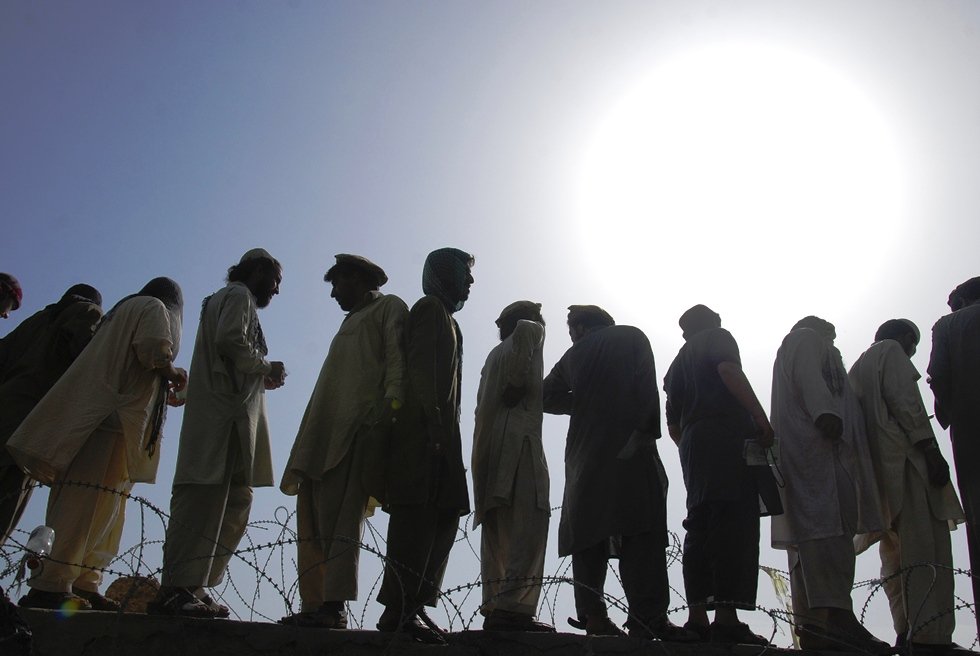
“North Waziristan has returned to life,” said Political Agent Kamran Khan Afridi, adding: “After the completion of Operation Zarb-e-Azb, all major hospitals -- including Agency Headquarter Hospital, Tehsil Headquarter Hospital Mir Ali and Razmak -- are made functional.”
Afridi said all closed schools in the now terror-free agency had been made functional and strict action had been taken against ghost employees of health and education departments. Effective traffic management and anti-narcotics campaigns had also been initiated, he added.
One person every second displaced by conflict, disaster in 2016: report
“And for the first time, an effective door-to-door anti-polio campaign is being run to make Waziristan free of the polio virus,” said the political agent.
He said efforts were being made to resolve old disputes among the locals and a huge progress had been made in this regard within a very short time.
He said several international donors’ projects had been initiated for infrastructure development, including reconstruction of the Bannu-Miran Shah road, which would be used as the third corridor to Central Asia and Afghanistan, and would be connected to the China-Pakistan Economic Corridor in the second phase.
All but 6% of IDPs back home
According to the political agent, the Ghulam Khan border was once generating 50% of the revenue for North Waziristan and the Angor Adda area was generating 60% of the revenue for South Waziristan. But both the areas have now seen a drastic reduction in revenue generation capacity – by up to 30% -- due to the closure of border with Afghanistan.
This had drastically impacted the livelihoods of the locals, but the military has invested heavily through their own resources to make more land arable to compensate the loss.
In this regard, the army has set up a copper factory in Muhammad Khel, and surveys are being conducted in Mir Ali for possible exploration of oil and gas in North Waziristan.
TDPs repatriation
Political Agent Kamran Khan Afridi claims that more than 3,000 damaged houses have been surveyed and more than 90% of the temporary-displaced persons (TDPs) have returned to their homes despite their limitations and a great deal of hurdles.
According to a recent report of the Fata Disaster Management Authority (FDMA), some 94.5% of TDPs have returned to their homes. “Only 6% of TDPs are yet to resettle due to some security concerns or unavailability of facilities,” said the FDMA report.
Brig (retd) Mehmood Shah, an analyst with special expertise on the tribal areas, is pleased with the overall achievement.
Over 49,000 IDP families still waiting to return to Waziristan
“The restoration of the North and South Waziristan tribal areas serves as a model,” says Brig (retd) Shah, adding: “It tells of the high ability of the Pakistan Army in restoring peace and eliminating terrorists.”
Still the people of Fata are confronted with the dilemma of a transition -- from tribalism to militancy and de-militancy and then to an imposed urbanisation.
Compensation is also one big issue facing the tribal people, and the leadership should pay attention to such grievances.
“Locals have played a positive role. They have fully cooperated with security forces in reporting and exposing any suspected terrorists,” said a security official, adding: “Providing facilities so that children can get proper education and other basic facilities of life is now our top priority.”
1731570357-0/elon-musk-(1)1731570357-0-405x300.webp)
-(1)1717678110-0/Kendrick-(1)-(1)1717678110-0-165x106.webp)









COMMENTS (1)
Comments are moderated and generally will be posted if they are on-topic and not abusive.
For more information, please see our Comments FAQ